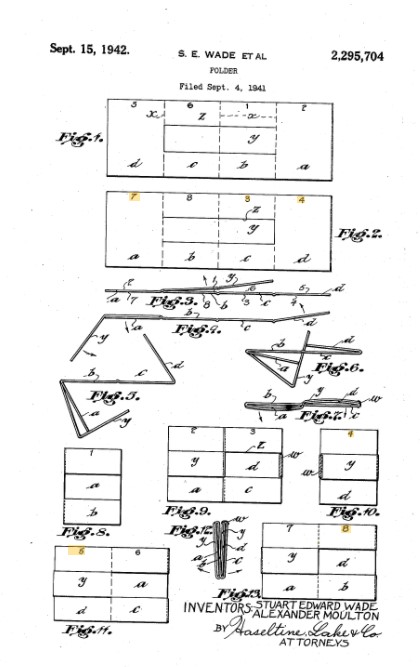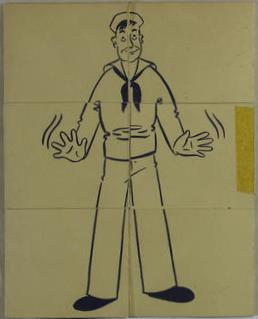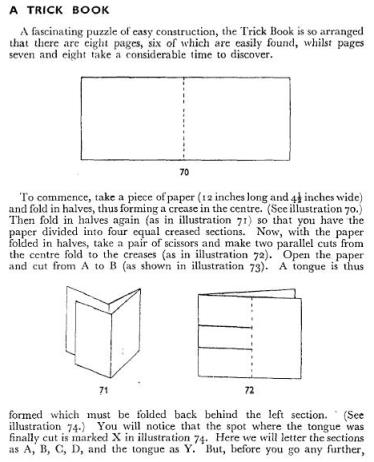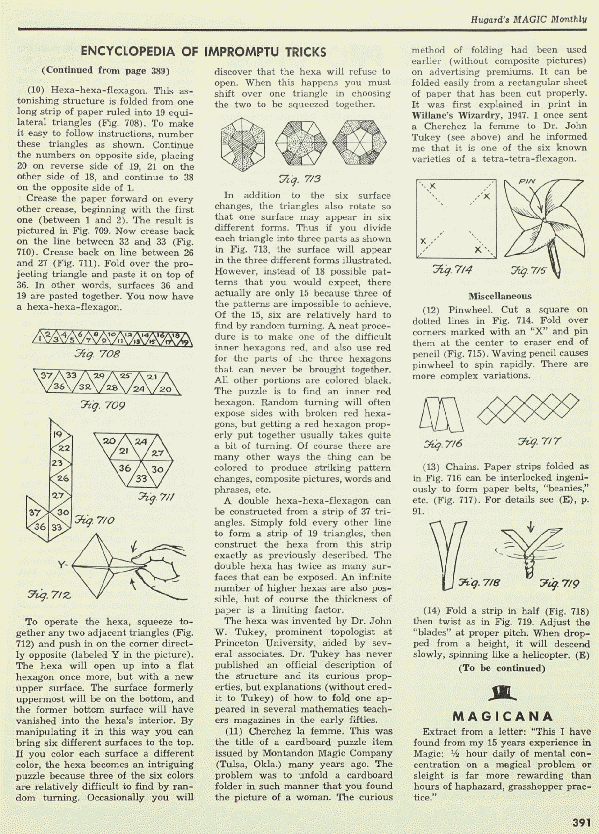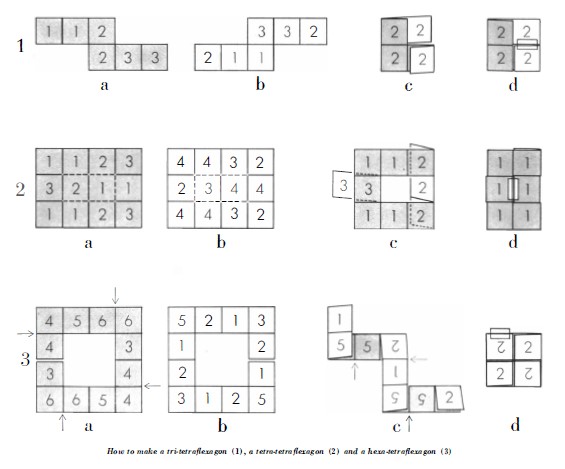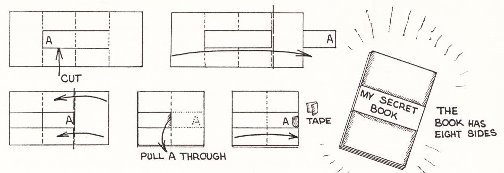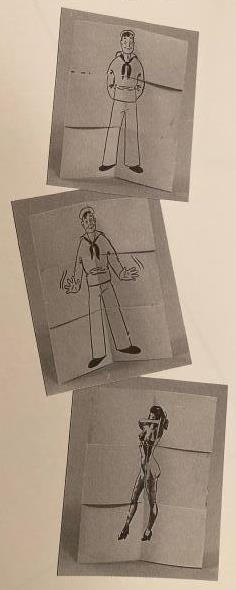| The Public Paperfolding History Project
Last updated 19/2/2024 x |
|||||||
| The Trick Book / Cherchez la Femme | |||||||
| This
page attempts to record what is known about the origin
and history of the tetraflexagon known as the Trick Book
/ Cherchez la Femme. Please contact me if you know any of
this information is incorrect or if you have any other
information that should be added . Thank you. ********** 1930s According to Martin Gardner's chapter about Tetraflexagons in 'The Second Scientific American Book of Mathematical Puzzles and Diversions', which was first published by Simon and Schuster in New York in 1961, the tetra-tetraflexagon 'has often been used as an advertising novelty because the difficulty of finding its fourth face makes it a pleasant puzzle. I have seen many such folders, some dating back to the 1930s. One had a penny glued to the hidden face'. This information is not included in the original article on which this chapter was based (published in 'Scientific American' in 1958). ********** 1941 An application for a patent for this device, said to be invented by Stuart Edward Wade and Alexander Moulton was made in 1941 with patent approval granted for the United States in 1942. (Information from Edwin Corrie)
********** 1946 According to an article titled 'About Tetraflexagons and Tetraflexigation' by Martin Gardner, which was published in the May 1958 issue of 'Scientific American', in 1946 'Roger Montandon ... copyrighted a tetra-tetraflexagon called Cherchez la Femme, the puzzle being to find the picture of the young lady.' He does not mention that the novelty was his own design.
Picture courtesy of the Lilly Library, Indiana University, Bloomington, Indiana from the Jerry Slocum Mechanical Puzzle Collection. According to the article 'Flexagons part one' in 'Xtra Credit 4' by Karl Fulves, published in 2009, Martin Gardner stated in a letter to him 'I had a tetraflexagon issued as an advertising premium by a company that made chain links. It was this that gave me the idea of Cherchez la Femme.' ********** 1947 'Willane's Wizardry' by Willane, which was pubished by ARCAS, in London, and has a foreword dated 1947, contains instructions for making and operating 'A Trick Book', which is the same tetraflexagon as that used as the basis of Cherchez la Femme. Information from Edwin Corrie.
According to the article 'Flexagons part one' in 'Xtra Credit 4' by Karl Fulves, published in 2009, Martin Gardner mentioned in a letter to him that this was the first description of a tetraflexagon in a magic publication. ********** Hugard's Magic Monthly 13:9 of February 1956 contained an article in which Martin Gardner mentions Cherchez la Femme. He says, 'It was first explained in print in Willane's Wizardry, 1947 ... Dr John Tukey informed me that it is one of the six known varieties of a tetra-tetra-flexagon.' (Information from Edwin Corrie.)
********** 1958 The May 1958 issue of 'Scientific American' included an article by Martin Gardner titled 'About Tetraflexagons and Tetraflexigation' which explains how to make and flex the tri-tetraflexagon, a tetra-tetraflexagon and a hexa-tetraflexagon. The article gives some historical information about the use of the tetra-tetraflexagon as an advertising novelty, and about a magical trick called 'Cherchez la Femme'. See various entries above.
********** 1963 The design also appears as 'The Magic Book' in 'Party Lines' by Robert Harbin, which was published by the Olbourne Book Co in London in 1963.
********** 1993 'Cherchez la Femme' was also included and explained in the compendium 'Martin Gardner Presents', published by Richard Kaufmann in 1993. (Information from Edwin Corrie.)
********** |
|||||||
